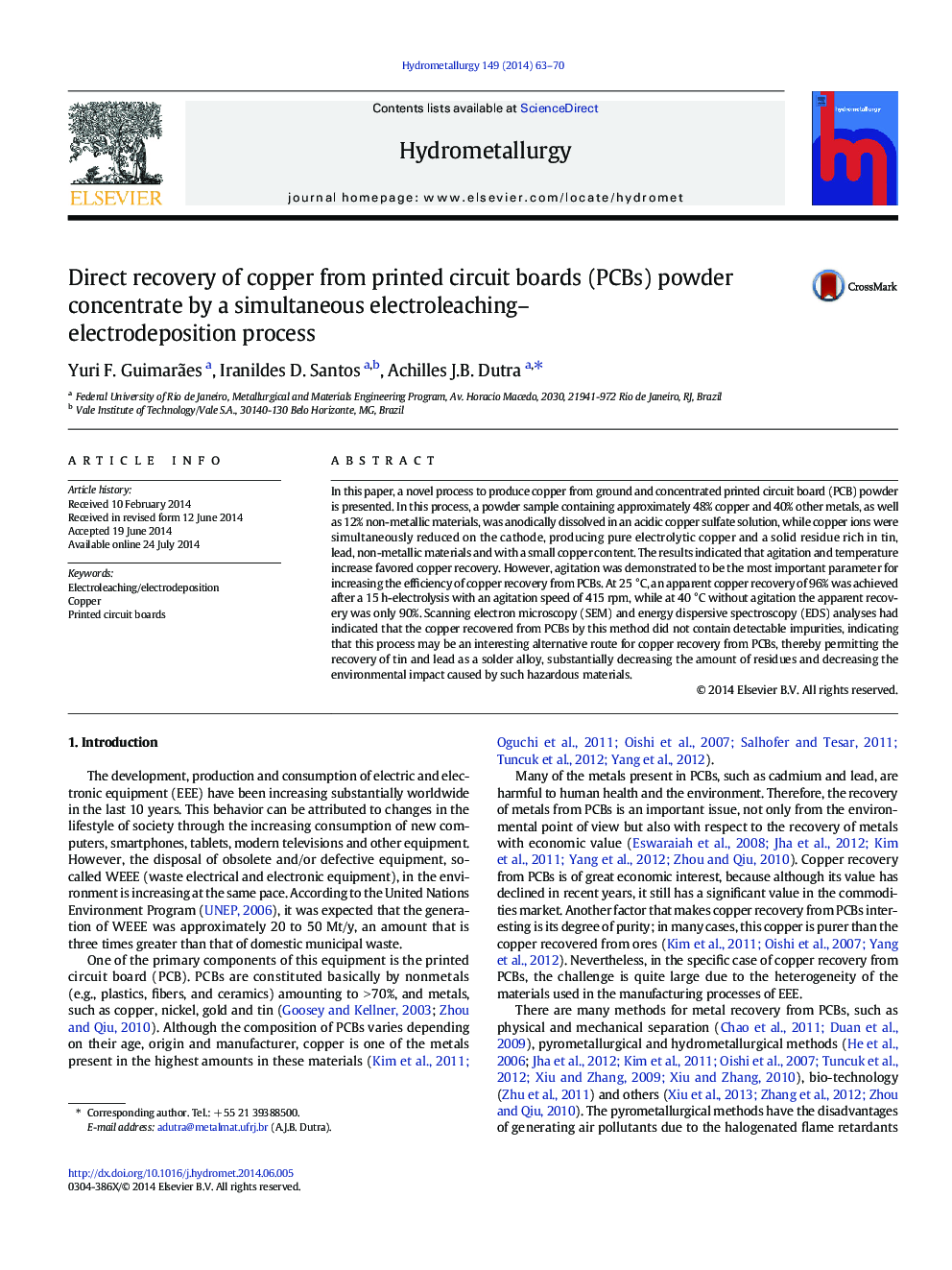| کد مقاله | کد نشریه | سال انتشار | مقاله انگلیسی | نسخه تمام متن |
|---|---|---|---|---|
| 212240 | 462038 | 2014 | 8 صفحه PDF | دانلود رایگان |

• Electroleaching/electrowinning process can be used for copper recovery from PCBs.
• The electrolyte stirring and temperature increase favor the copper recovery.
• Electrolyte agitation has shown to be more important than temperature.
• Copper recovered was qualitatively free from impurities.
In this paper, a novel process to produce copper from ground and concentrated printed circuit board (PCB) powder is presented. In this process, a powder sample containing approximately 48% copper and 40% other metals, as well as 12% non-metallic materials, was anodically dissolved in an acidic copper sulfate solution, while copper ions were simultaneously reduced on the cathode, producing pure electrolytic copper and a solid residue rich in tin, lead, non-metallic materials and with a small copper content. The results indicated that agitation and temperature increase favored copper recovery. However, agitation was demonstrated to be the most important parameter for increasing the efficiency of copper recovery from PCBs. At 25 °C, an apparent copper recovery of 96% was achieved after a 15 h-electrolysis with an agitation speed of 415 rpm, while at 40 °C without agitation the apparent recovery was only 90%. Scanning electron microscopy (SEM) and energy dispersive spectroscopy (EDS) analyses had indicated that the copper recovered from PCBs by this method did not contain detectable impurities, indicating that this process may be an interesting alternative route for copper recovery from PCBs, thereby permitting the recovery of tin and lead as a solder alloy, substantially decreasing the amount of residues and decreasing the environmental impact caused by such hazardous materials.
Figure optionsDownload as PowerPoint slide
Journal: Hydrometallurgy - Volume 149, October 2014, Pages 63–70